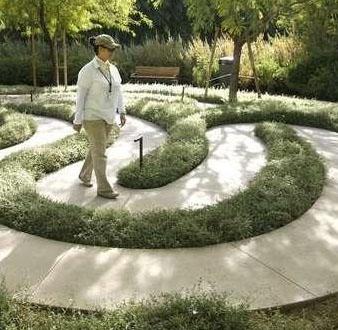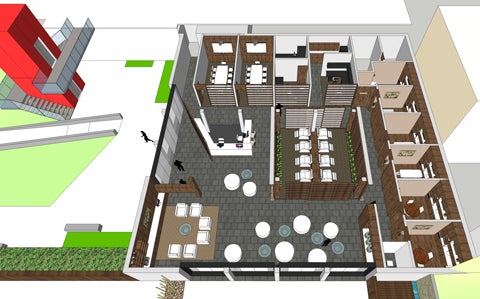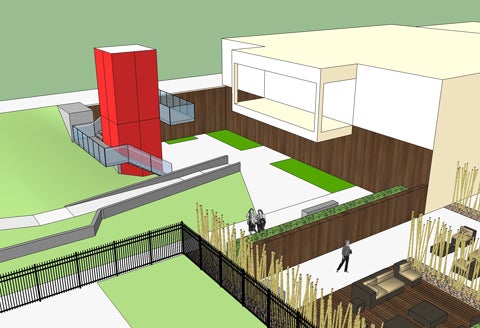Wellness Center for Student Success
Student success includes discovering way s to manage stress and develop practices for lifelong health and wellbeing. Modeled in scope after the new Student Recreation Center (SRC) on the CSUN campus, the Student Wellness Center will be a destination where students can revitalize themselves. The Center will offer nutrition counseling, therapeutic treatments such as acupuncture and massage, and workshops focused on wellness and managing stress. The Wellness Center will be a place of calm amid the sometimes hectic nature of student lifestyles.
s to manage stress and develop practices for lifelong health and wellbeing. Modeled in scope after the new Student Recreation Center (SRC) on the CSUN campus, the Student Wellness Center will be a destination where students can revitalize themselves. The Center will offer nutrition counseling, therapeutic treatments such as acupuncture and massage, and workshops focused on wellness and managing stress. The Wellness Center will be a place of calm amid the sometimes hectic nature of student lifestyles.
About five years ago, University Student Union (USU) Executive Director Debra Hammond, Dean Sylvia A. Alva of the College of Health and Human Development and Linda Reid-Chassiakos of the Student Health Center first talked about what it would be like to have a Wellness Center on campus.
Kingson Leung, Coordinator for Special Initiatives for the University Student Union explained. “We’ve discovered that the SRC has changed climate of the campus. Students are here at night and weekends, fitness and wellness are focuses. So a Wellness Center is complementary piece.”
To confirm their observations, USU Executive Director Debra Hammond and SRC Director Jimmy Francis, in partnership with the College of Health and Human Development and the Klotz Student Health Center embarked on research. “Surveys and focus groups informed us the Wellness Center is an ideal response to current student needs on the CSUN campus,” Leung said. Funding for the Wellness Center will primarily come from Student Union fees that have been saved over a number of years to build this facility. 
From the College of Health and Human Development, Dean Sylvia Alva brought together a team of faculty from academic areas she knew would be critical to the development of a premier Wellness Center. From the first illustrations for Interior Design to outlining spaces for nutrition counseling areas, Terri Lisagor, Interim Chair of the Department of Family and Consumer Sciences, would play an integral role. Health Sciences faculty and chair of the Committee from Health and Human Development, Sloane Burke along with members Frankie Augustine, Dianne Philibosian, and Lou Rubino, were instrumental in the initial phases as well. “They, and Linda Reid-Chassiakos and Marianne Link of the Klotz Student Health Center all developed wish lists,” Leung said, “In each instance we said ‘Go big. No limits. We can scale back if we have to.’”
“Students and Interior Design faculty had brainstorming sessions and gave us a lot of input before we brought ideas to the architects,” Leung said. “Professor Kyriakos Pontikis had his [Interior Design] students create design boards for the team to review as part of a class project.”
“The entrance to the Center will immediately let visitors know they’re in a calm, caring place,” Leung said. “Behind the reception desk will be a water wall. The students will get a sense of what the space is about.”
The reception area, relaxation rooms, private massage therapy and acupuncture rooms, and rooms for health education meetings and nutrition counseling will be designed to create a sense of privacy. The public areas will create a sense of expansiveness. “The lounge area becomes an indoor-outdoor experience, with big windows looking out to the gardens, people won’t feel enclosed. These are some of the indirect ways we can get students to connect to their senses.”
The approach of the Wellness Center is not clinical--students who are sick, injured or looking for preventive medical care will be able to get those services at the Klotz Health Center. The Wellness Center will be a place where students can find serenity amid the rush and activity of campus life. Sloane Burke, Health Sciences faculty commented, “The Wellness Center will also serve to support student success and retention. From established research, we know that students who experience less stress or who are able to effectively manage their stress are more productive and often obtain higher achievement in their scholarly work.”
The Center will also provide opportunities for student employment, service learning, and internships. “For customer service," Leung said, "We will look for students who want to be engaged in service and programs at a professional level."
The selected location is just steps away from the Student Recreation Center, beside the Plaza Pool. The 5,800 square foot interior will utilize a 26,800 square foot area, including outdoor features, and will be an oasis of contemplation gardens, water features, and even a walking labyrinth to help students get their minds in the present moment.
“The architects are the same ones who built Student Recreation Center,” Leung said. “They really listen to students, and they’ve worked on a lot of college campuses and know how to work in these environments.” The Wellness Center is scheduled for completion in 2015. *Donations are being accepted for enhancements to the construction and design.
*Be sure to designate your gift to "Student Wellness Center" in the Special Instructions box.
Photos and artists' renderings courtesy LPA Architects.
-Jean O'Sullivan
F2013
